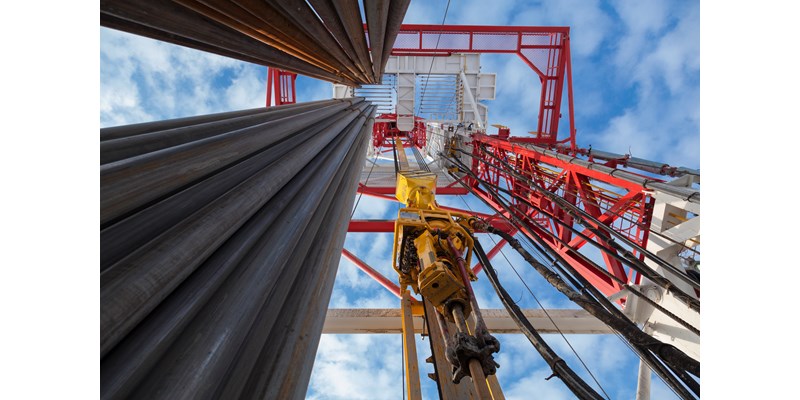Discuss your challenges with our solutions experts
1 minute read
Technology has played a huge role in the rapid rise of production in the Permian. Operators are bullish on the region's long-term potential and poised to exploit it at an unparalleled pace over the next few years.
However, geological constraints that may arise as the play is aggressively developed could lead to production shortfalls and, in turn, higher prices early next decade.
Our reference case analysis forecasts Permian production to increase to more than 5 million barrels per day (b/d) in 2025. Fully modelling the potential impact of the latest breakthrough technologies reveals measurable upside to peak production.
However, downside risks related to tighter well spacing and well-on-well interference could bring peak Permian production forward by four years compared to the upside case – putting more than 1.5 million b/d of future production in question.
Technology gains in the past few years have propelled Permian well performance to new levels. However, industry is set up to develop the Permian region's shale zones at an unparalleled level, testing the geological limits of the play.
It is very likely that the upcoming level of activity will introduce a new set of issues, particularly reservoir deliverability.

Robert Clarke
Vice President, Upstream Research
Robert leads our US onshore research, with a particular focus on the evolution of the tight oil sector.
Latest articles by Robert
-
Opinion
Video | Tariff turmoil: how big a cost hit will US oil and gas operators take?
-
Featured
Upstream oil & gas regions 2025 outlook
-
Opinion
Global upstream update: oil supply questions and portfolio resets
-
The Edge
Three factors driving US liquids production to new heights
-
Opinion
What's new in global upstream
-
Opinion
Chesapeake-Southwestern Energy deal: ten key takeaways
Countless other shale plays have proven that the first few years of growth are typically the easiest. Beyond that, producers require more breakthroughs to keep their barrels at the bottom of the cost curve.
The Marcellus hit regulatory and midstream bottlenecks, the Bakken contended with huge differentials, the Haynesville dealt with a massive cyclical downturn, and the Eagle Ford sweet spots ended up being much smaller than originally modelled. In the Permian, the growth challenge could relate to the industry ultimately finding hard subsurface limits for tight oil recovery.
We assessed and quantified the unintended consequences of high-intensity, long-lateral, close-proximity drilling and fracking on reservoir deliverability. The analysis found that well interference during fracking events could reduce future estimated ultimate recovery (EUR) value by 30 percent compared with today.
Reservoir issues could manifest as sweet spots become exhausted. Taking into account some bearish assumptions, if future wells tap more difficult rocks and are not offset by continued technology evolution, the Permian may peak in 2021.

Robert Clarke
Vice President, Upstream Research
Robert leads our US onshore research, with a particular focus on the evolution of the tight oil sector.
Latest articles by Robert
-
Opinion
Video | Tariff turmoil: how big a cost hit will US oil and gas operators take?
-
Featured
Upstream oil & gas regions 2025 outlook
-
Opinion
Global upstream update: oil supply questions and portfolio resets
-
The Edge
Three factors driving US liquids production to new heights
-
Opinion
What's new in global upstream
-
Opinion
Chesapeake-Southwestern Energy deal: ten key takeaways
We examined in detail one of the most prevalent reservoir risks, parent-child wells. Infill wells located next to older producers are routinely called 'child' wells, in reference to the older offset 'parent' producers. Only a small percentage of wells drilled today in the Permian are child wells but this will change in the coming years as operators ramp up production.
Alex Beeker, our senior research analyst, explains: "When child wells are drilled, they are exposed to different reservoir conditions than the parent. Leaning on history again, we believe future child wells, because they're effectively drilled into pressure sinks, could have EURs 20-40 percent smaller than their parent producers. This would massively impact production growth and also limit the amount of cash flow available for reinvestment."
A few things are clear from our sensitivity analysis: Permian production will grow aggressively for the next few years, technology advancements will quickly spread across all operators, and EURs for many parent wells should keep rising. Further into the future though, huge downside reservoir risks may quickly become a reality if technologies don't evolve to meet the geological challenges of the future.
There is much at stake for operators in the Permian to get the technology vs. geology equation right. Under the conditions outlined in the report, the maximum range between the upside technology and downside reservoir risk cases is more than 1.5 million b/d in 2025. That's more production than the Bakken ever delivered on an annual basis.
The technology vs geology tug-of-war has the ability to profoundly alter the future production profile of the region, and ultimately oil price. Lower Permian supply from 2021 onward could exacerbate the global supply gap and effectively mean the US cannot deliver what the market believes it can. Other sources of higher cost, conventional production would be needed.







